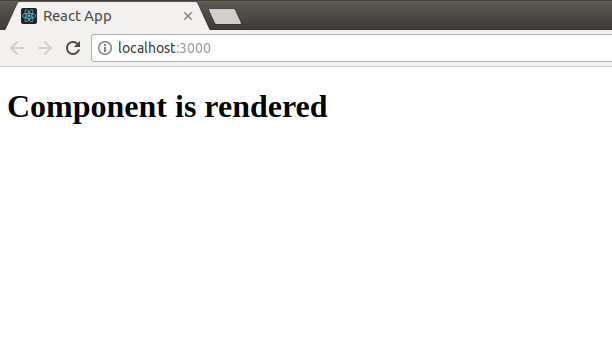There may arise a situation when we want to render something based on some condition. For example, consider the situation of handling a login/logout button. Both the buttons have different functions so they will be separate components. Now, the task is if a user is logged in then we will have to render the Logout component to display the logout button and if the user is not logged in then we will have to render the Login component to display the login button. This is what we call Conditional Rendering in ReactJS. That is to create multiple components and render them based on some conditions. This is also a kind of encapsulation supported by React.


Let us now create a page in React which will have a Message and a Button. The button will read “Login” if the user is not logged in and “Logout” if the user is logged in. We will also add some functionality to this button as upon clicking “Login” the message will read “Welcome User” and the button will change to “Logout” and upon clicking “Logout” the message will change to “Please Login” and the button will change to “Login”.
To do this, we will create a parent component named “Homepage”, two components named “Login” and “Logout” and one more component named “Message”. We will use a state variable named “isLoggedIn” to store the information about whether the user is logged in or not. The value of this variable will change according to the click of the button by the user. The Homepage component will render the Message component to display the message and it will also render one of the components among Login and Logout based on the value stored in isLoggedIn. The Message component will also return different messages based on the value of state isLoggedIn.
Let us now look at the complete program to do the above task:
e
Output:


In the above output, you can see that on clicking the Login button the message and button get’s changed and vice versa.
Using conditions with logical && operator
We can use the logical && operator along with some condition to decide what will appear in output based on whether the condition evaluates to true or false. Below is the syntax of using the logical && operator with conditions:
{
condition &&
// This section will contain
// elements you want to return
// that will be a part of output
}
If the condition provided in the above syntax evaluates to True then the elements right after the && operator will be a part of the output and if the condition evaluates to false then the code within the curly braces will not appear in the output.
Below example is used to illustrate this:
Output:


You can clearly see in the above output that as the condition (counter == 5) evaluates to true so the <h1> element is successfully rendered on the screen.
Preventing Component from Rendering
It might happen sometimes that we may not want some components to render. To prevent a component from rendering we will have to return null as its rendering output. Consider the below example:
Output:


You can clearly see in the above output that the Example component is rendered twice but the <h1> element is rendered only once as on the second render of the Examplecomponent, null is returned as its rendering output.



12 Comments
It was an excellent Blog to see from you which is very useful.
ReplyDeleteExcellent Blog. Thank you so much for sharing.
ReplyDeletebest react js training in chennai
Thank you for sharing and its was very usefully to me
ReplyDeleteReactJs Training in Hyderabad
ReactJs Online Training in Hyderabad
Very interesting blog. The way you wrote about the React Js and conditional rendering is very nice. One can easily understand the basics of Reactjs by reading your blog. I was also looking to hire expert react js developer and got your blog. Thanks for sharing such a great blog.
ReplyDeletePlease also check some React js development services India.
Thanks for this nice blog.
ReplyDeleteFull Stack Training in Hyderabad
Full Stack Training in Ameerpet
Nice post, thanks for sharing the great information.
ReplyDeleteReact JS Online Training
React JS Online Course
React JS Online Training in chennai
nice post..
ReplyDeletejava online training hyderabad
java online training in india
edius Pro 9 Crack software free download is non-linear video editing software which transforms ordinary looking movies into professional one .Edius 9 free download full version with crack
ReplyDeleteWishing you a merry Christmas and a Happy New Year! · Merry Christmas, with wishes of peace on earth and goodwill to all people. · Wishing you all .
ReplyDeleteChristmas Message to Husband/a>
thanks for valuable info
ReplyDeletegcp data engineer training in hyderabad
While prior programming experience can be beneficial, it’s not a strict requirement. Basic knowledge of HTML, CSS, and JavaScript will be helpful as React builds upon these fundamentals.
ReplyDeleteThank you for sharing the information.
ReplyDeleteHyperion Financial Management Training from UK
SQL Server Training Institute In Bangalore
Splunk Administration Online Training from Chennai
Oracle GoldenGate Online Course from India
Sap Security & GRC Training from Hyderabad